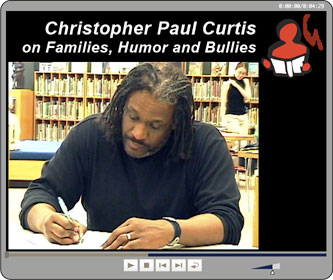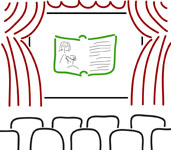This post was originally published in Nick Glass’ monthly column for Curriculum Connections, an e-newsletter published by School Library Journal in partnership with TeachingBooks.net. Subscribe to this free newsletter here.
Cuddling with a good book, reading aloud from a favorite novel, and retelling stories at gatherings are familiar activities that support family involvement with reading. Jim Trelease’s The Read-Aloud Handbook (6th ed., Penguin, 2006) has inspired generations to build successful literature connections outside the classroom. Other authoritative (and passionate) guides, including Esmé Raji Codell’s How to Get Your Child to Love Reading (Algonquin, 2003) and Emma Walton Hamilton’s Raising Bookworms (Beech Tree Books, 2008), present specific strategies and activities to motivate families to take an active role in the reading lives of their children.
In this post, I offer a selection of online book-based activities that can be shared at home to further encourage family participation with literature and reading. Web sites offer a wealth of material that can stimulate discussions about books. Video and audio interviews with authors, for example, provide fresh insights about their work. Novel units, now available online, can guide conversations about books, making it possible for busy family members to know more about what their children are reading and to ask questions about particular books. The Internet’s potential to bring people and information together adds dynamic new possibilities to extend family involvement in reading.
1. Encourage students and families to view this brief movie featuring Christopher Paul Curtis
If your pupils are reading Curtis’s Bud, Not Buddy (Delacorte, 1999), recommend that they view this movie at home. Online interviews with authors enable families to meet writers, hear about their creative processes, and have discussions inspired by the professional experiences of book creators.
2. Locate study guides and lesson plans
Encourage students and families to have informed conversations using these comprehensive book guides. (Just click on the above link and enter a title.) The TeachingBooks.net database contains K-12 resources on materials ranging from picture books to young adult classics.
Book trailers, like their film industry counterparts, are video teasers that can turn books into topics of family conversation.
4. Listen to authors introduce themselves and pronounce their names
Families can hear hundreds of authors and illustrators comment on their monikers by linking to the “TeachingBooks.net Author Name Pronunciation Guide.” These online audio recordings offer playful musings about names, rhymes, cultures, books, and more.
I hope you enjoy these suggested activities. If you have any thoughts on connecting families, technology, and books, please email them to me at nick@teachingbooks.net.
 Posted by Nick Glass, Founder & Principal of TeachingBooks.net
Posted by Nick Glass, Founder & Principal of TeachingBooks.net




Leave a Reply